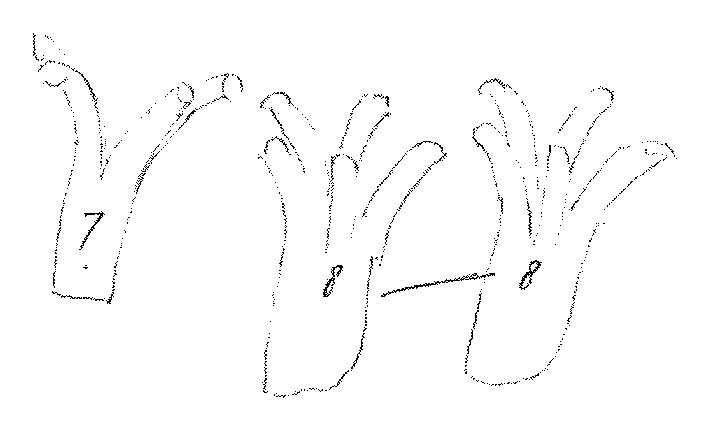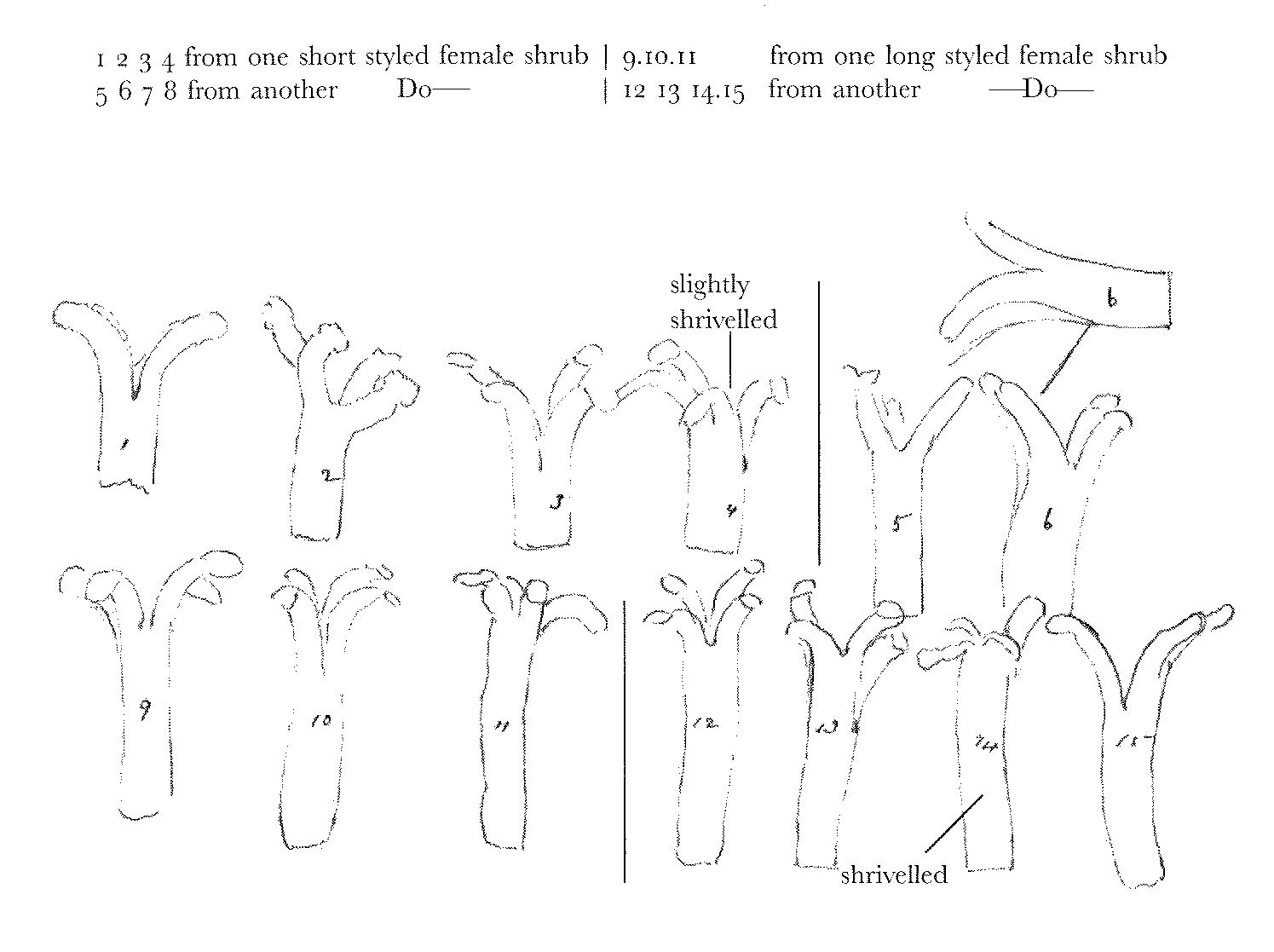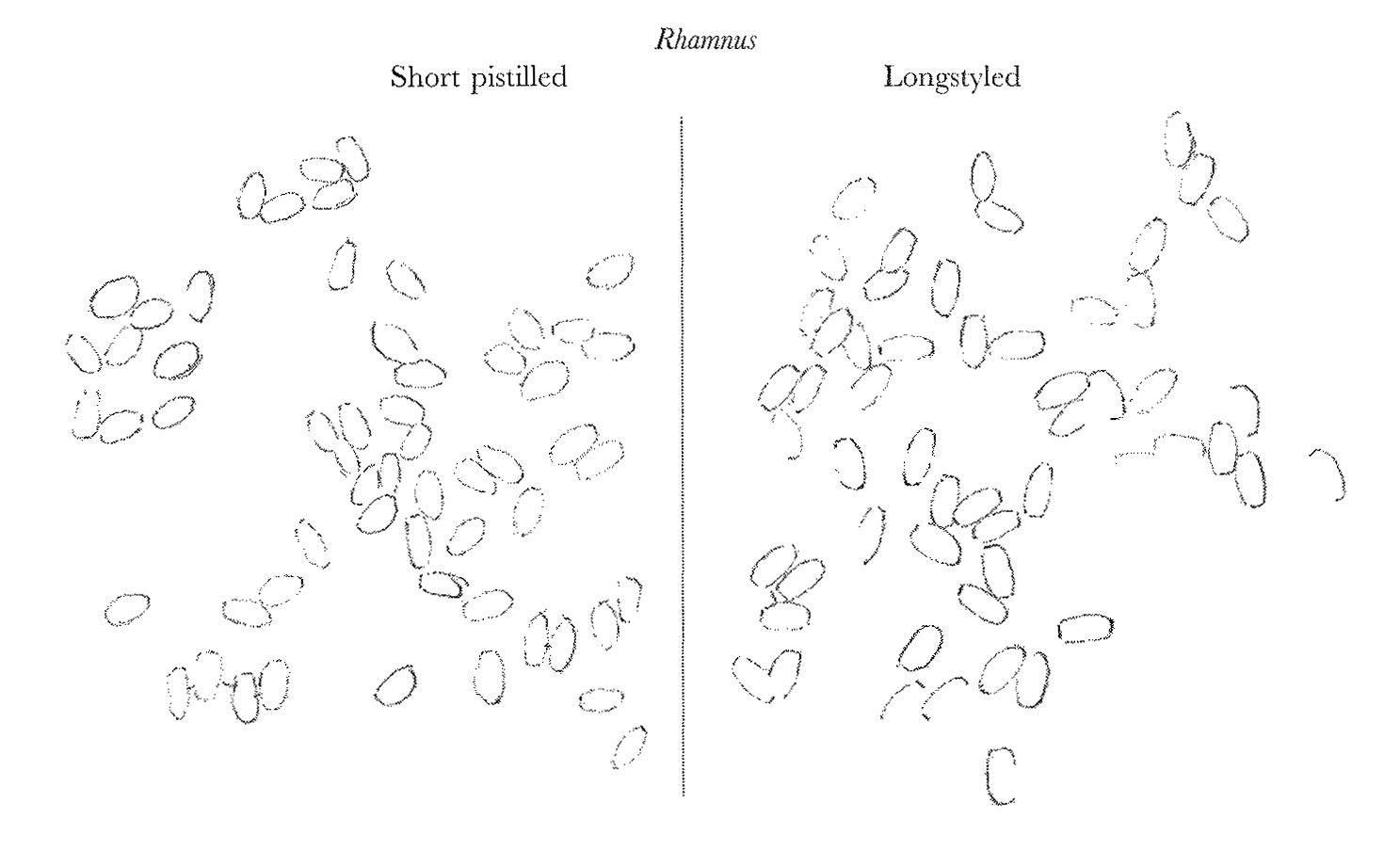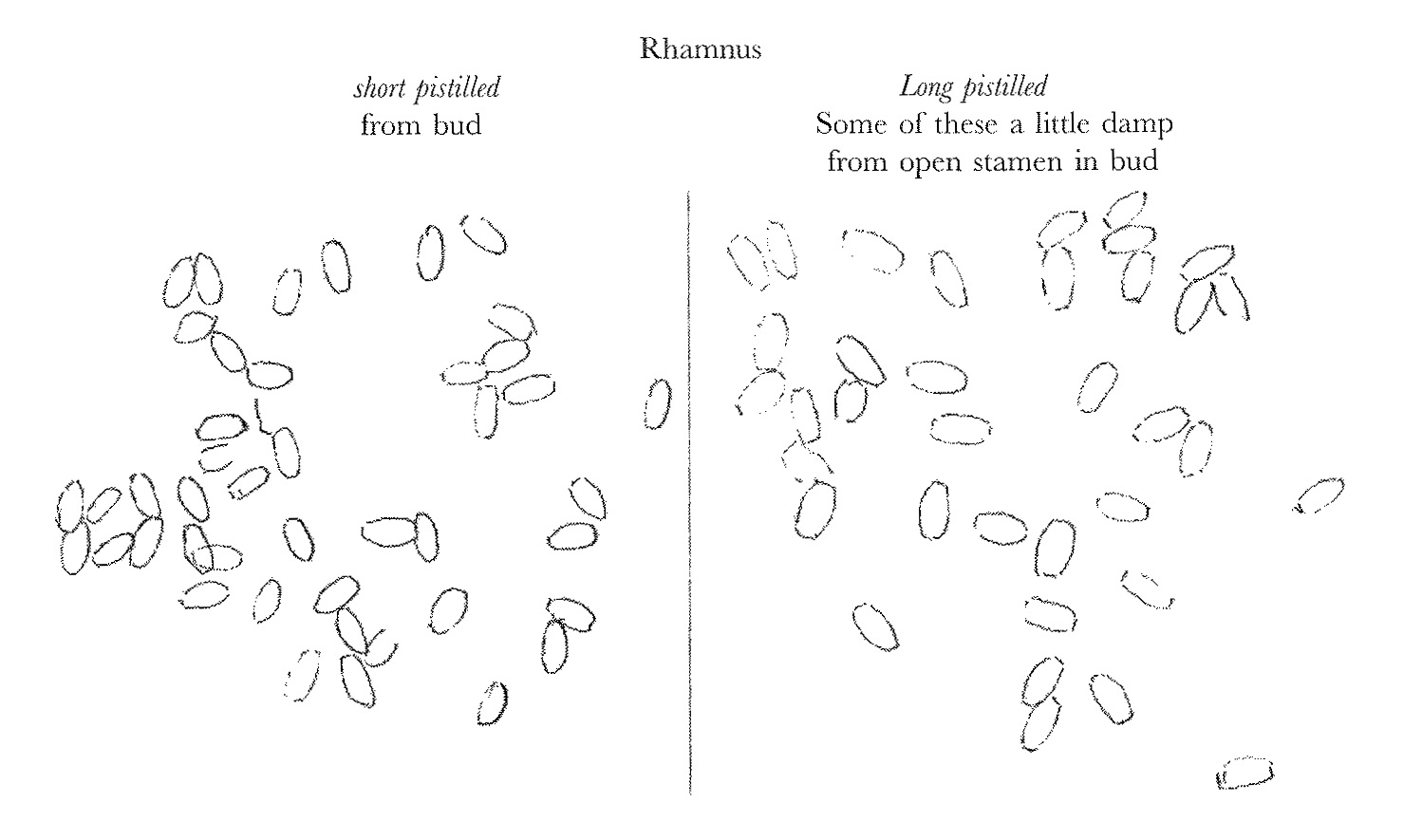From W. E. Darwin 29 June [1866]1
Southampton.
June 29th
My Dear Father,
I enclose what flowers I could find of the different kinds; I am afraid it is doubtful whether you will find any pollen, as the flowers are very much past. I suppose it will turn out all rubbish, & I think gradations will probably turn up.2
Still I think it ought to be the explanation, as it is much neater— And I do not quite see how supposing it to have been originally hermaphrodite & female explains it, as tho’ one can understand hermaphrodite become male, why should the female become male?3
I enclose outlines of pollen, & styles cut off close to ovary.4
There is a great difference in the length of papillæ on the two male flower stigmas;5 the long styled is much the roughest
I hope the twigs will grow;6 one has taken root in my friend Dunn’s garden.7
I am going to look at the white broom this evening.8
I am glad the boys are going a trip in Wales.9
I hope mamma is pretty brisk10
[Enclosure 1]11

[Enclosure 2]

[Enclosure 3]

[Enclosure 4]

CD annotations
Footnotes
Bibliography
Alum. Cantab.: Alumni Cantabrigienses. A biographical list of all known students, graduates and holders of office at the University of Cambridge, from the earliest times to 1900. Compiled by John Venn and J. A. Venn. 10 vols. Cambridge: Cambridge University Press. 1922–54.
Forms of flowers: The different forms of flowers on plants of the same species. By Charles Darwin. London: John Murray. 1877.
Summary
Sends flowers of the differing kinds [of Rhamnus?] with observations.
Letter details
- Letter no.
- DCP-LETT-5134
- From
- William Erasmus Darwin
- To
- Charles Robert Darwin
- Sent from
- Southampton
- Source of text
- DAR 109: A78–9, A47–9
- Physical description
- AL inc? †, encl 4pp †
Please cite as
Darwin Correspondence Project, “Letter no. 5134,” accessed on
Also published in The Correspondence of Charles Darwin, vol. 14


